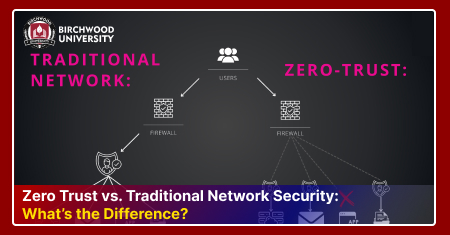Top 25 Real World Case-Studies on Cyber Security Incidents?
Oct 10, 2025Cybersecurity incidents are commonplace today. With news making headlines every alternate day, incidents ranging from data theft, security breaches, and digital frauds like phishing, the list is endless. Technological advancements and explosion of the internet usage have further widened the scope for cybersecurity attacks. Threats are getting more and more sophisticated and more evolved and dangerous threats are surfacing.
This blog explores the top 10 real-world case studies on cybersecurity incidents to give a broad understanding of how the threat landscape is evolving and what threats could reach you or your business/organization in today's digitally advanced ecosystem.
Top 25 Real-World Case Studies Delineating Cybersecurity Incidents
1. The Equifax Breach
One of the biggest data breaches globally is the massive breach in 2017 where hackers exploited the web application of Equifax, a multinational consumer credit reporting agency. The incident witnessed a loss of personal data of 147 million consumers approximately. It caused severe damage to the credit bureau both financially and reputation-wise. This massive breach was possible as Equifax made the blunder of not correcting a vulnerability in their web application Apache Struts causing the compromise of personal IDs and data to malicious actors who can use this information even for future thefts. Hackers were able to access about 209,000 credit card details and social security numbers of the British and Canadian clients.
Case studies in a cyber security incident like Equifax shed light on the dire need to keep the company's applications/ software updated and to regularly perform ethical hacking to keep their vulnerability in check. It highlights the importance of efficient vulnerability management and implements strong solutions and measures to prevent such breaches from occurring.
2. WannaCry Ransomware
Another infamous cybersecurity attack that impacted worldwide, is the WannaCry Ransomware that caused massive destruction and chaos, infecting Windows computer systems worldwide, and impacting over 230,000 computers in over 150 countries in 2017. The hackers took advantage of the vulnerability in the Windows named EternalBlue. Although Microsoft released a security patch before the attack to solve the vulnerability, many users had failed to install it. This attack disrupted operations across various institutions like Hospitals, Government agencies and businesses at the global level. As a response mechanism, a "Kill Switch" was discovered by a security researcher, however, many had already made payment of the ransom to the hackers to restore their computers, with the hackers estimated to have made billions of dollars.
Again, case studies on incidents like this demonstrate the need for installing any new updated version of cybersecurity measures and to keep one's system updated regularly.
3. Ukraine Power Grid Attack
Perhaps, the biggest power outage on a national grid ever, caused by a cyberattack, that impacted the Western parts of Ukraine. This incident occurred in December plunging the city- about one-fifth of Kyiv into darkness. A group of threat actors going by the name Sandworm executed this attack by targeting the power grid of Ukraine's capital city. This group employed BlackEnergy 3, a malware for compromising the country's power distribution companies's computer systems.
4. The Sony Pictures Hack
Took place in 2014, hackers managed to infiltrate the network of Sony Pictures and release confidential data and other critical information including private communications between executives and employees' personal details. This led to a massive setback for Sony causing huge financial loss and reputational damage. Sony Pictures incurred heavy investments in improving its cybersecurity measures and making numerous legal settlements.
Cybersecurity case studies for incidents like this highlight the importance of improving a company's network security and more careful management, handling and protection of data.
5. Pegasus Airlines
In what can be called the biggest failure of a human agent, the Pegasus Airlines Case took place in June 2022. A security settings misconfiguration by an employee in the Airline exposed and compromised the company's valuable data amounting to 6.5 terabytes. The configuration error of the AWS bucket resulted in exposing 23 million files with flight charts, airline crews' personal information and navigation materials for the world to see and easily corrupt.
Case studies for security incidents like this underscore the significance of educating the workforce and making them aware of the devastating consequences of a security incident. Employees are the weakest link for security attackers hence, they must have awareness of the best practices.
6. Bad Rabbit
Devastating ransomware that masqueraded as an Adobe Flash update infected several computers with about 200 targets in Bulgaria, Ukraine and Russia. The hackers managed to invade people's computers by posing as an update for Adobe Flash. This attack was made possible through the media websites that were compromised.
Case studies in Incidents like this expose how threats could take any shape and infiltrate our systems and networks.
7. Yahoo Attack
Another one of the biggest security attacks and data breaches in history is the Yahoo attack that caused the hacking of about 500 million Yahoo accounts. This was reported as a state-sponsored attack where the hacker invaded Yahoo's systems and stole data. This included Yahoo account holders' names, phone numbers, birth dates, email addresses, security questions, etc. Although Yahoo had apprehended the intrusion in 2014 they failed to disclose the breach to the public causing numerous identity theft and phishing attacks.
A case study into such security incidents exposes the need for immediate security response and compliance with security regulations.
8. Estonia Cyber Attack
Taking place in 2007, in one of the largest cyber attacks Estonia became victim to a DDoS ( Distributed Denial of Service, with the hackers' target to overloading the country's critical websites including banks, government and media, etc with zombie computers, and making these sites inaccessible to the legitimate users. This attack further permeated other services like online banking, media communication, etc causing Estonia to carry USD 1 million costs.
A case study in this will shed light on the various hacking mechanisms and their devastating impacts.
9. Melissa Virus
Launched by a programmer, this virus is listed in the history of cybersecurityas one of the most dangerous attacks for its speed of spreading and the ensuing chaos in the initial years of the internet. Melissa Virus infected the Microsoft Word macro functionality and posed as a genuine email subject line coaxing users to open an infected document, resulting in clogging servers and inboxes and disrupting operations across several companies, including Intel, Microsoft, the US Marine Corps, etc.
A case study about this security incident will delve into the earliest methods of Cyber security attacks and their evolution over the years.
10. Mariott Hotel Data Breach
This incident led to the compromise of the personal information of about 500 million guests at the Mariott Hotel. While the issue has been lurking around the company's technology for several years, it only came to light in 2018. The Mariott Hotel has been a regular target ever since.
11. Yale New Haven Health Data Breach
It is one of the largest healthcare systems in the United States, and in March 2025, it confirmed a massive data breach that affected about 5.6 million patients. The exposed information included patient names, birth names, contact details, and medical record numbers. It was their luck that no medical files or payment details were taken. The breach happened after unauthorized access to a third-party vendor system used for storing patient data. This case reminded hospitals and healthcare organizations to closely monitor every external system connecting to their network and strengthen vendor security policies.
12. Facebook (Meta) API Scrape Incident
In May 2025, Facebook (Meta) experienced another data scraping incident where hackers collected over 1.2 billion records from a public API that was not properly restricted. Although the data was not directly stolen through a hack, it was gathered using the automated bots, which exploited Meta's API loopholes. This incident proved that you can't always blame direct hacking for privacy breaches, but system design flaws can also cause them. Social media platforms face growing pressure to control data access and prevent scraping at this scale.
13. SpyX Stalkerware Breach
In March 2025, a Stalkware app named SpyX was found to have exposed the data of nearly 2 million users. This leak had usernames, email IDs, IP data, and plain-text passwords. The app was built in a way that it would secretly track phone activity, but its own poor security left user information wide open to the public. This case sparked new discussions about supervision apps' ethical and legal risks. This warns us that these apps are harmful to privacy and are often built with little attention to data protection. That is why experts warn users to avoid apps that request hidden or unnecessary permissions.
14. Jaguar Land Rover Source Code Leak
Jaguar Land Rover faces a cyberattack that exposed its internal files, software source code, and employee login credentials. Hackers reportedly achieved access through stolen passwords from one of the company's external contractors. The leaked data included sensitive documents and internal development tools, putting intellectual property at risk. This case was another example of how supply chain attacks can harm even the most advanced global brands. It also highlighted the need for large corporations to enforce strict access control, employee training, and regular password updates to stop similar breaches.
15. Bank Sepah Cyberattack
In March 2025, a group of Codebreakers hacked the Iranian state-owned Bank Sepah. This case caused a nationwide panic and highlighted the growing trend of politically motivated cyberattacks on financial institutions. Around 42 million customers were affected by this case. The attackers claimed that they had stolen around 12 terabytes of customer data, including account numbers, phone numbers, and transaction records. The hackers demanded ransom, but the bank refused to pay, leading to some stolen data being leaked online. This reminds Manu of the financial institutions worldwide that cybersecurity investments are critical for financial management.
16. Episource Ransomware Attack
Healthcare service provider Episource experienced a ransomware attack in early 2025, and attackers stole data belonging to 4 million individuals. The attackers somehow gained access through a random third-party file and information about the transfer system. Sensitive data was also affected, including names, insurance, and information about various hospitals and clinics. As a result, this breach led to service delays and forced the company to repair its cybersecurity systems. This incident showed how ransomware emphasizes the importance of data encryption, system backups, and secure vendor relationships.
17. WhatsApp Spyware Incident
In 2025, WhatsApp users were targeted by a new zero-click software attack on Graphite. This spyware allowed hackers to access messages and files without the user clicking any links. It is worth noting that victims were mainly journalists, political activists, and human rights workers. The attack revealed how spying tools are evolving and becoming more challenging to detect. Meta quickly released a patch and encouraged users to update their apps. This case proved that even well-known communication tools are not necessarily safe, and regular updates remain one of the simplest yet most impactful ways to stay protected.
18. New York University Admissions Leak
In March 2025, New York University (NYU) reported a data breach that exposed admissions information for around 1 million students and applicants. The stolen data included test scores, contact details, and citizenship status. The breach was linked to a misconfigured database left open to the internet. Many affected students are concerned about how long their information has been secure. NYU took immediate steps to secure its systems and notify those impacted. The event was a clear reminder that educational institutions must maintain strong cybersecurity controls, especially when handling large volumes of personal data.
19. Tea App Data Leak
The Tea App, a popular social platform, suffered a significant leak of private user data. These exposed records included photo IDs, selfies, and verification images, totaling more than 72,000 photos. The breach happened due to a poorly protected cloud storage bucket. This case raised serious issues about the safety of identity verification systems in mobile reality. Users had uploaded personal photos without even realizing they were being stored insecurely. This encouraged developers to review how they handle sensitive files and adopt stronger encryption methods for data stored in the cloud.
20. CISA Ivanti Breach
The U.S Cybersecurity and Infrastructure Agency (CISA) was hit by a cyberattack linked to two zero-day weaknesses in Ivanti products. The breach gave hackers limited access to classified systems before the flaws were patched. Although no class information was confirmed stolen, the event revealed the high risk of relying on third-party software. It showed that even government cybersecurity agencies are vulnerable when vendor systems are insecure. The case pushed many organizations to review their vendor software for hidden risks and apply patches faster.
21. DISA Global Reach
In early 2025, DISA Global, a contractor working with U.S defense agencies, suffered a data breach that incidentally exposed personal information of 3.3 million individuals. The stolen records have names, Social Security numbers, and government identification data. This breach occurred due to outdated systems that lacked modern encryption. The incident highlighted the dangers of keeping sensitive data on legacy platforms. After this attack, DISA launched a modernization effort to update its systems and add stronger security monitoring.
22. Finastra Secure File Transfer
Finastra is one of the financial technology companies that was affected by a security breach involving its secure file transfer platform. A cybercriminal known as abyss0 gained access to 400GB of sensitive financial documents and customer data used for technical support purposes. Then, the data was offered for sale on BreachForums' dark website. This breach shows the importance of securing file transfer tools as they hold large amounts of confidential information. The attacker attempted to sell the stolen data on the BreachForums dark web forum, asking for $20,000. The affected SFTP platform was immediately isolated to contain the threat. They launched an investigation with the help of third-party security experts to determine the full scope of the breach.
23. OpenAI API Key Exposure
In late 2024, thousands of OpenAI API keys got exposed on code-sharing platforms like GitHub. These keys could lead to mishappenings like unauthorized users making API calls or accessing private content. This incident warns us that hardcore API keys should never be used in client-side code. Responsible authorities must always utilize secure environment variables or secret management services for server-side applications. Regularly monitor API usage for any suspicious activity while educating developers on best practices for API key security.
24. MGM Resorts Ransomware Attack
In September 2024, MGM Resorts, one of the world's largest hospitality companies, was affected by a cybersecurity attack that disrupted operations for a few days. This incident led to a 100 million dollar loss for the third quarter of 2023. Hackers fooled a help desk employee through a social engineering phone call and gained access to internal systems. Then, MGM had to restore systems manually, costing millions of dollars. This shows that even a simple phone call can lead to a large-scale cyberattack, making employee training just as important as software security.
25. Ticketmaster Data Breach
At the end of 2024, Ticketmaster announced a large data breach that affected millions of customers. Hackers stole names, email addresses, phone numbers, and even partial payment information. The breach was traced back to an unknown third-party system, which was using it for ticket processing. Customers reported spam and phishing emails soon after the incident, suggesting their data was being used for scams. Ticketmaster strengthened its security systems and reviewed all third-party connections. This case showed how entertainment and e-commerce platforms can be vulnerable when customer data is not properly secured.
A case study for this kind of Cybersecurity incident highlights the importance of complying with security regulations and standards and ensuring strict security protocols.
Those are the Top 10 Real-World Case Studies on Cyber Security Incidents, which give valuable insights into the significance of robust security measures.






